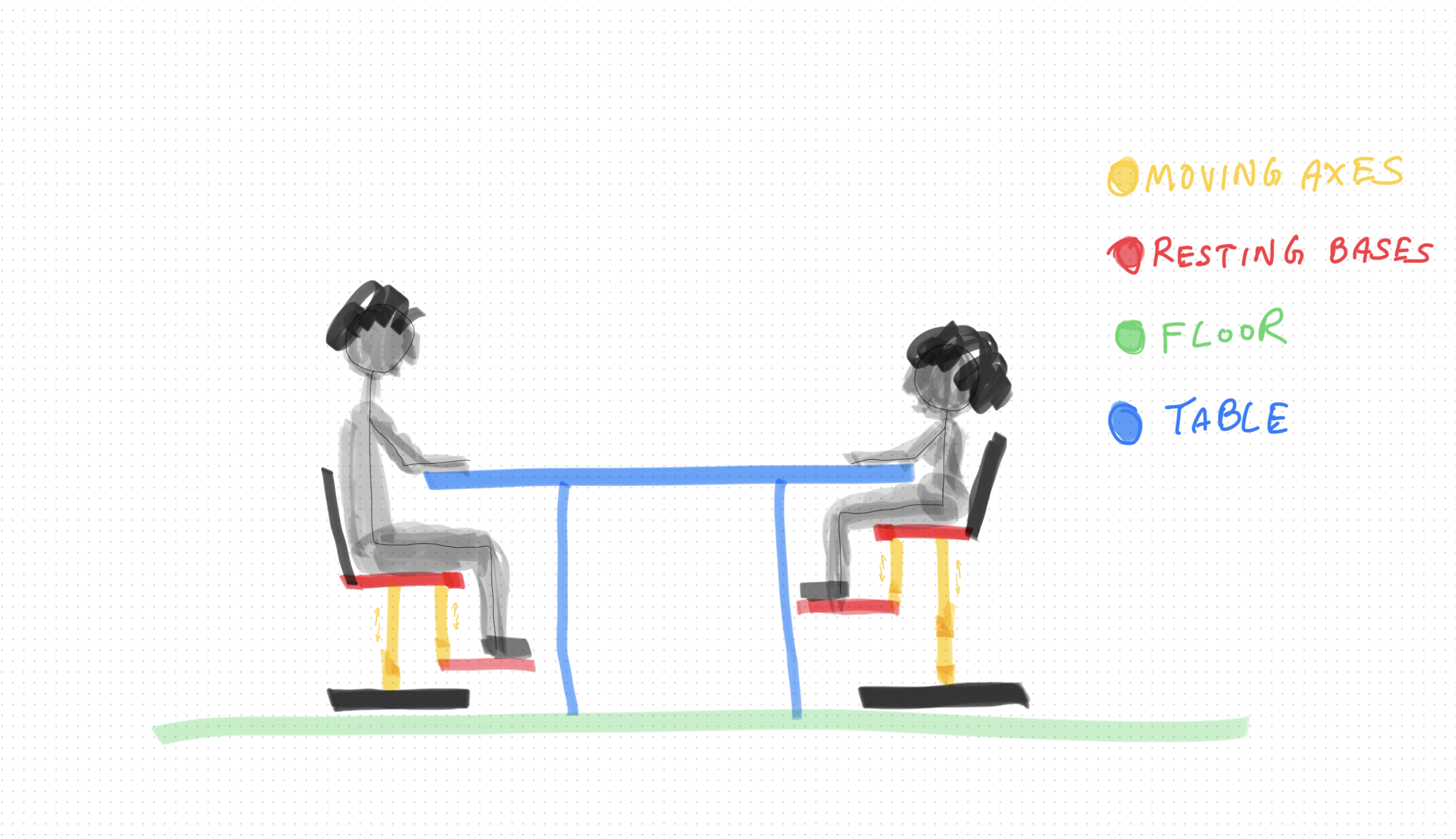Why do we bend our bodies to furniture instead of bending furniture to our bodies?
A simple proposal: fix the table height, free the chair, and let two adjustable planes end the tyranny of one-size-fits-none seating.
Finding the right chair has always been a quiet, daily frustration. We adapt to furniture that refuses to adapt to us: hunching, stretching, dangling, compromising. Yet comfort isn’t a luxury; it’s a basic ergonomic right.
It’s time we standardize and customize how humans of all sizes meet the surfaces of the world. The following is my proposition.
Human-Centered Seating
The principle is simple: fix the table, free the chair.
Let every table be set at a thoughtfully high, standardized height — chosen with the tallest likely seater in mind. Let every chair have a footrest and become an instrument of personal calibration, not compromise. A chair with two independent yet harmonious adjustments:
- Sitting Position: the height of the seat base.
- Foot Resting Position: the plane where the feet find their home.
The process becomes intuitive:
- You first tune your foot plane — a wide, stable surface that lets your feet rest flat, heel and toe alike. This anchors the body, grounding balance and circulation.
- Then, you align your seat base, ensuring your thighs rest evenly and your elbows meet the tabletop naturally. Your shoulders ease, your posture stabilizes, and your mind clears. No dangling of the feet.
The body stops compensating; it simply functions.
Ergonomically, three horizontal planes define every seated human experience:
- The working plane: where hands meet tools, the desktop of life.
- The seating base plane: where the body’s weight rests, from hip to thigh.
- The foot plane: the foundation where stability and comfort truly begin.
When these three planes are harmonized, comfort ceases to be subjective; it becomes measurable, reproducible, teachable.
The mechanical insight is straightforward: the footrest moves in sync with the seat’s elevation, preserving proportional comfort — a wisdom borrowed from the enduring grace of classic barber chairs.
This must become more than a design trend; it should be a universal seating protocol. A principle taught early, like posture or handwriting — the idea that comfort is an active setting, not a passive adjustment. In classrooms, children could learn to adjust their environment to their body, not their body to the environment.
Furniture designers remain free to create — in materials, aesthetics, and culture. This standard doesn’t dictate form; it defines process. It ensures that every chair, no matter its style, respects the anatomy of its sitter.
Social dynamics remain untouched. The table — the great equalizer — keeps everyone aligned above the desktop. What differs is what has always differed: the human silhouette from elbow to crown.
But below it, the world is equalized. Everyone rests, works, and eats in comfort tailored precisely to them.
This is how the future should sit: A world where every seat is personal, every table is constant, and comfort is no longer accidental — but a standard of thoughtful design and personal customization.
